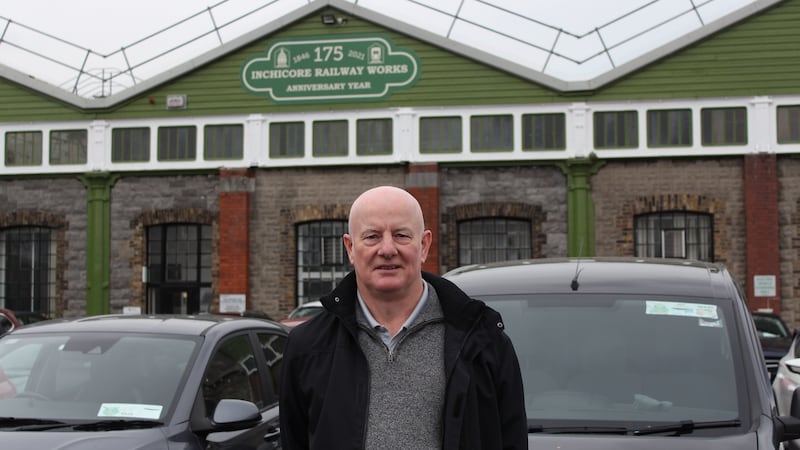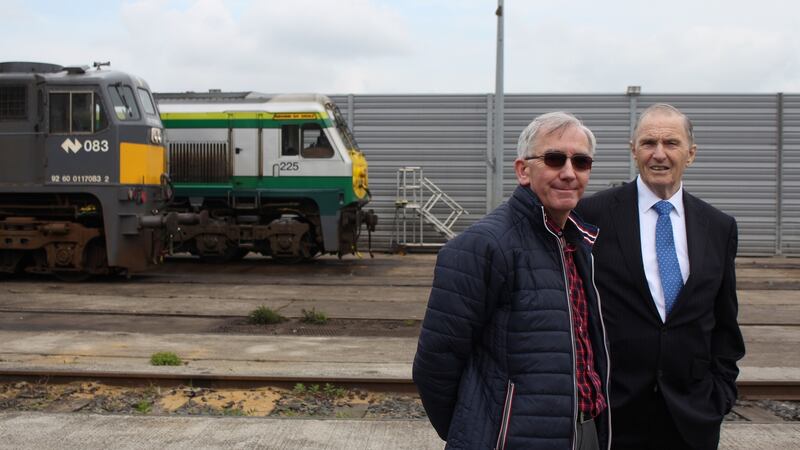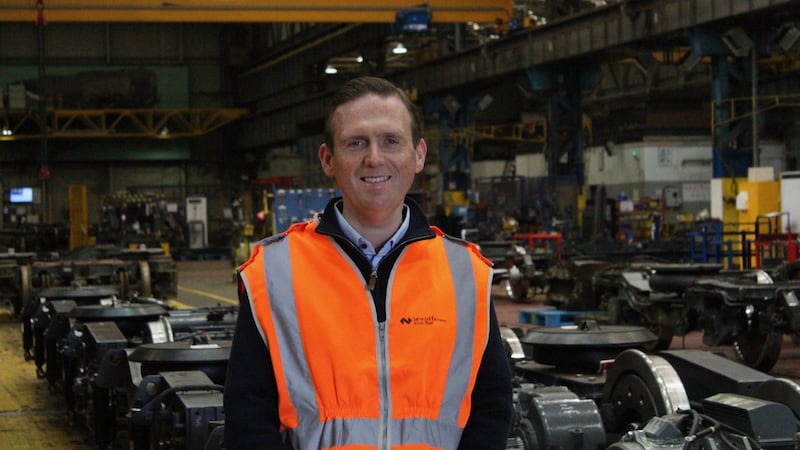Thick stone walls surround a corner of Dublin city where generations have spent most of their lives. A place of work, of loyalty and of memory. Inchicore railway works is its own village within a village and the jewel in the crown of the Irish railway network for almost two centuries.
“Fathers encouraged sons and nephews to come into the place… if they were good at the job, they’d be guaranteed a job in the future,” says Martin Dooley, who started in the works as an apprentice in 1970 and only retired in 2020.
“The older men set a very high standard. People were proud of the work they did and the place where they worked… Some of them weren’t very well educated but they were interested in their job and passing it on. A small school was set up here and [the staff] were taught basic English and maths to help them complete their education so they could apply for a better job. That caring atmosphere was there way back.”
The staff weren’t just educated here. When the works were first built, Inchicore was still a rural area outside the city and the workers needed somewhere to live. The houses and terraces near the works were built by the Great Southern & Western Railway and the neighbourhood grew around the facility.
'Some of the older men, their formal education wasn't good, but their skills as a craftsperson were second to none'
“Inchicore was built as a workshop but also as a community,” says historian Dr Peter Rigney. “It’s surrounded by a high stone wall and when it was built it must have looked like a medieval walled town. Within the wall were houses, a dining hall, a library and the works. Outside the walls, the community built both sacred and secular institutions.”
In the early 1960s roughly 2,000 people were employed at the works. Bill Phillips started in 1962 as an apprentice at just 15-years-old, as CIÉ’s final steam locomotives were clanking through their last days in service.
“My father worked for CIÉ in Broadstone [depot]… he said to me one day ‘they’re looking for apprentices and I want you to put your name down’ and that was career guidance back then”.
Phillips studied during his apprenticeship – maths, English and trade – and qualified in 1967 before starting in Inchicore in 1970.

“The guys that you worked with ranged from young men to guys due for retirement. There was a great mix, a great camaraderie, the banter was fierce. There was no unnecessary picking but no one ever took any offence,” he says.
“Some of the older men, their formal education wasn’t good, but their skills as a craftsperson were second to none. There were all sorts of traders, no matter what you were looking for, someone knew somebody.”
This goodwill often stemmed beyond official working duties. Phillips recalled, “scrap bits of timber were stashed away and come near Christmas, there were toys made from them from doll’s houses to rocking horses [with] people from the foundry making brackets, people from the boiler shop making [metal] pieces and the upholstery shop making the leather saddles before it all went to the painters.”
“Unofficial recycling,” Phillips calls it. “It was a great company, they looked after you.”

Damian Howe started as a fitter – essentially a train mechanic – in 1980. Like Phillips and his clandestine toy factory for family gifts, Howe is not the only one of his relations with railways in the blood.
“You have generations that worked here. My grandfather on my mother’s side, one of his sons, one of my cousins. Then on my father’s side, my great uncle worked over in Broadstone as well. There was a tradition of it … it’s like one big family … there is a family connection there. Unfortunately, I’m the last.”
Fortunately Inchicore is still a hive of activity despite its long history. Some 500 office and maintenance staff still use the site and Irish Rail continues to maintain the works' place in the heart of the community.
“We have a good relationship with the neighbours here because they are a big part of our history,” says works manager Rory West.

Some of the local community history and connections to it will be marked next week during delayed celebrations for the works’ 175th anniversary. The anniversary occurred in 2021 but the pandemic delayed any major way of marking it. Irish Rail will host an open day to give people a chance to go behind the scenes of the many buildings that keep the wheels turning.
It takes place on Saturday, May 7th, and several railway heritage societies from across the country will attend. Special attractions on the day will include steam locomotive No 85 Merlin which is under the custodianship of the Railway Preservation Society of Ireland, plus a line up of the railway's modern rolling stock.












